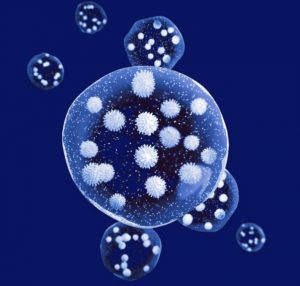| The 9th Institute colloquium was given by Matej Kanduč from the Biophysics group: A large number of infectious diseases are transmitted via large droplets and by airborne routes. How far these droplets can move, how rapidly and strongly they deposit on surfaces or are filtered out by facial masks is related to how far and how effective droplet-borne diseases can be transmitted. Despite its significance, this aspect of infection spread has attracted surprisingly little scientific attention. In this talk, we review the physical principles that govern the fate of the droplets as well as the fate of the viruses encased inside them. Among various factors that influence the transmission, relative humidity plays a paramount role. Many viruses are namely more stable at low relative humidities, as encountered inside buildings in winter and in airliners. Furthermore, low relative humidity speeds up evaporation and thus keeps even initially larger droplets suspended in air as aerosol for extended periods of time. Filtering out the aerosol is rather difficult and requires sophisticated filtering methods. At the end, we discuss recent research developments in interactions of aerosolized viruses with various materials, surfaces, and mask filters. |  Link to the colloquium Link to the colloquium |

